You’ve undoubtedly felt a scary approach – whether it be turbulent, clouded or the terrain, approaches to airports can be uncertain. (Nervous flyers, stop reading!)
Here are our top 12 scariest airport approaches in the world:
12 – Gibraltar Airport
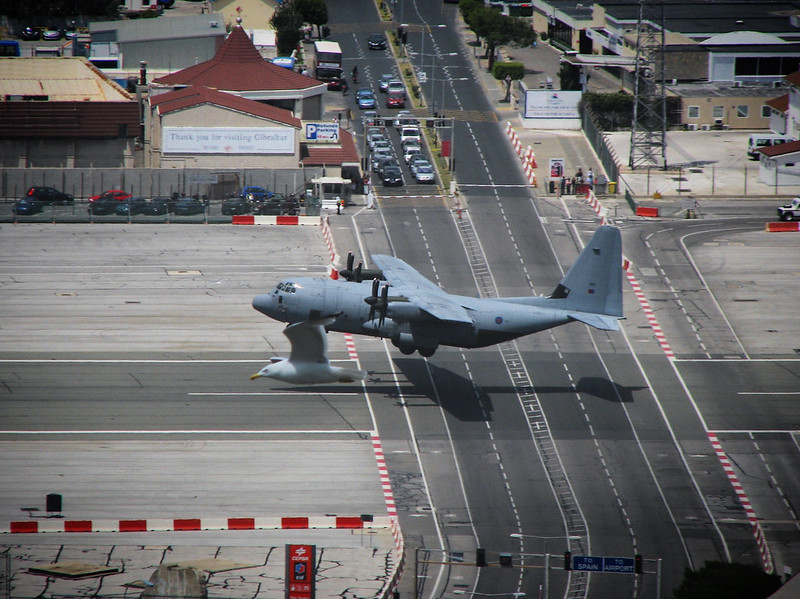
The British Overseas Territory of Gibraltar is only 6.8km² in size, so it is no surprise that its international airport is jostling for space. The airport is tightly enclosed by a bustling city, a busy harbour and the massive limestone Rock of Gibraltar, looming over the city. The approach to Gibraltar has been likened to the old Hong Kong Kai Tak Airport, due to the densely packed areas surrounding the runway and the encircling terrain. It is also is intersected by Winston Churchill Avenue, one of Gibraltar’s busiest streets. It cuts across the harbour end of the runway and has to be closed every time a plane lands or takes off. Passengers aboard flights to the island are regularly terrified by the road markings that crisscross the runway!
11 – St Helena, British Overseas Territory

St Helena airport opened in October 2017, following years of construction struggles. First conceived in 1999, it was finally completed in 2015 and immediately declared ‘non-functional’. The airport is perched on the side of a barren cliff and the approach lies between a valley of sorts. The winds from the open seas are both strong and fickle and the airport was declared the most useless in the world. Flights from Johannesburg land at the whim of St Helena’s fickle weather. Even when it is good pilots effectively have to perform a ‘semi-emergency’ landing, making each flight a nerve-wracking experience.
10 – Matekane, Lesotho

Flying in Lesotho, a small Southern African nation is terrifying enough – mountains and treacherous weather make for squeamish conditions. Located in the mountainous centre of Lesotho, runway 07 of Matekane Airstrip provides a terrifying approach and landing. The 400-meter dirt strip, which ends at a sheer drop, is so short that it is all-too-common for aircraft to have insufficient airspeed to take off at the end. Instead the aircraft will drop down into the 7,500 foot-deep valley of the Ohohbeng River, until it gains enough speed to pull out of the canyon.
9 – Courchevel, France

What you’re seeing is NOT an optical illusion, it is the ridiculously sloped runway of the popular French skiing town of Courchevel. This airport sits in French Alps at an altitude of 2,000 meters. Although the apron in front of the terminal is level, shortly after commencing their takeoff roll the runway in front of departing aircraft falls away to a gradient of 18.6 degrees; this is an angle similar to a ski jump! It is also short, at just 537 meters, with a sheer drop at one end and a wall of ice at the other. Incoming aircraft are required to accelerate after touchdown, to ensure they make it up the steep slope. There is no go-around procedure, a missed approach will end in disaster for the mainly Pilatus aircraft that fly here.
8 – Barra, Scotland
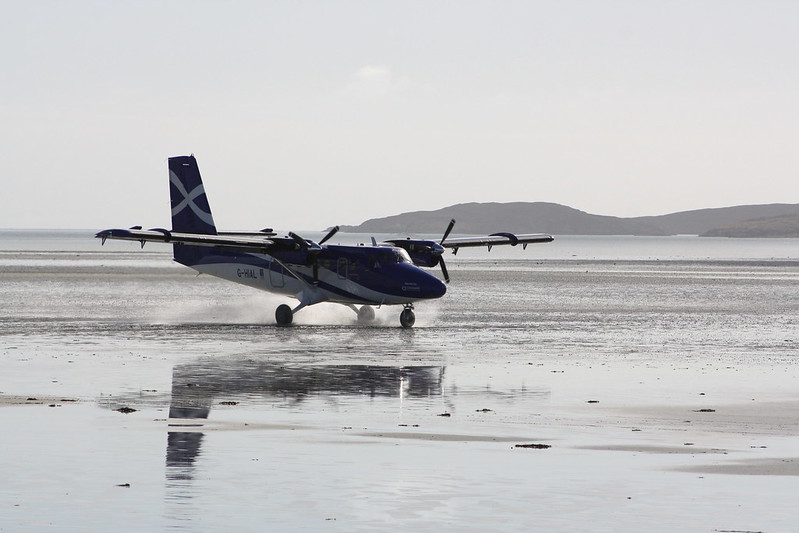
Intentionally landing an aircraft in water was indeed called for by Captain Sully on the Hudson River, but sat in a Twin Otter on approach to Barra, a small island off the west coast of Scotland, is disconcerting. Pilots have to wait until the tide is out to the point that they can land and take off. The runway is also known as Traigh Mhor Beach, the only airport in the world where scheduled flights operate from a beach, marked by wooden poles buried in the sand. At full tide, Barra’s three runways are fully submerged.
7 – Queenstown, New Zealand

Queenstown is beautiful, featuring world-class ski resorts and unique scenery. Queenstown International Airport sits on the edge of Lake Wakatipu. Approach to this airport features mountains and strong winds that call for a precision approach, with flap adjustments to take of all the conditions that could send the aircraft into the icy waters below. The approach takes the aircraft over Lake Hayes and down into the trough of the Kawarau River valley, below the peaks of the surrounding mountains. Low-lying mist in the valley, strong downdraught’s and a short and often slippery runway requires precision in training and actual execution.
6 – Saba, Dutch Caribbean
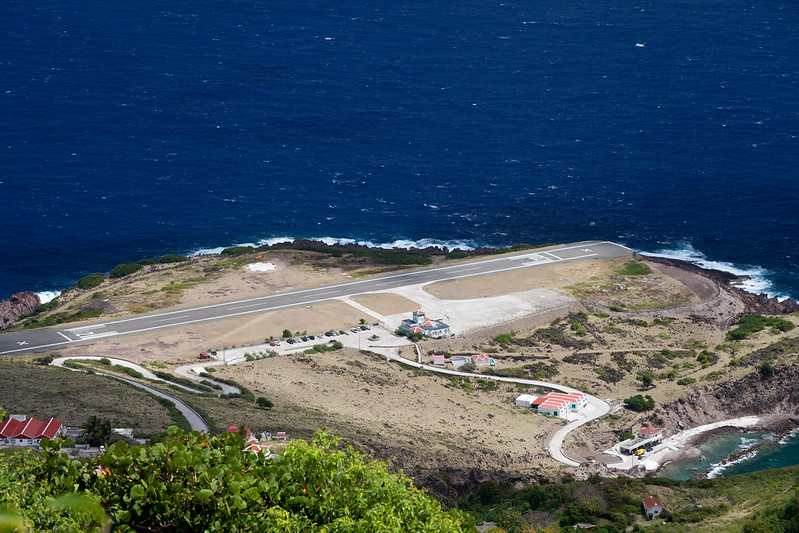
Landing a plane is no easy feat, let alone trying to do it on the world’s shortest runway. This is what Twin Otter pilots have to do, transporting passengers to and from a 1,300-foot-long runway on the tiny Dutch Caribbean island of Saba. Built along the rocky terrain of the island, the narrow runway sits in between cliffs on one end and the blue waters of Cove Bay on the other; this makes for a nail-biting landing and takeoff experience. The airport was built on the only grounded land found anywhere on the island, making the runway as short as it is.
5 – Madeira, Portugal
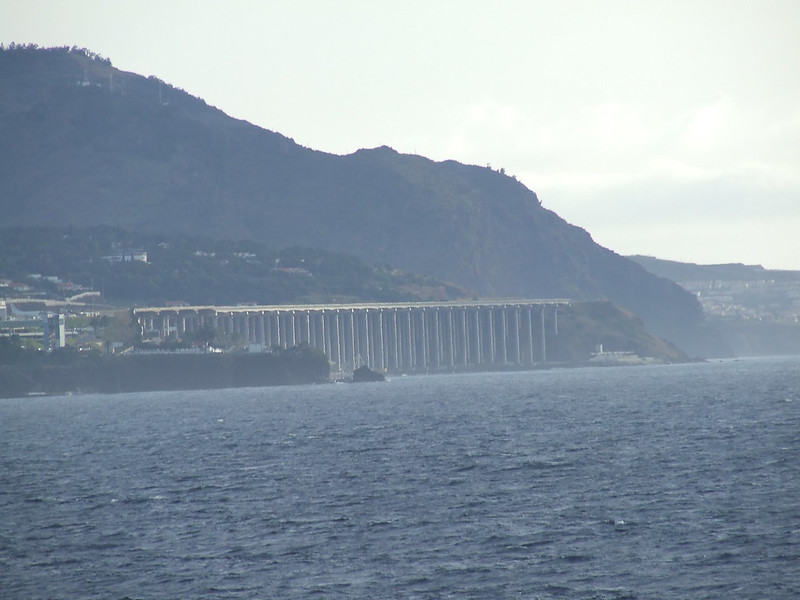
The picture above gives you a sense of Madeira Airport. The runway sits close to the sea at the base of a sheer-sloping hill, that generates powerful crosswinds requiring pilots to approach in a ‘crab’ manoeuvre (an acute-angled sideways approach) until the last seconds prior to touchdown. In late-2000, following some horrific crashes, the runway was extended by roughly 1 kilometre, on pylons that take the runway out over the sea. This inflicts an extra psychological load on pilots; since there is no safety zone on the seaward side of the runway, only a sheer drop.
4 – Leh, India
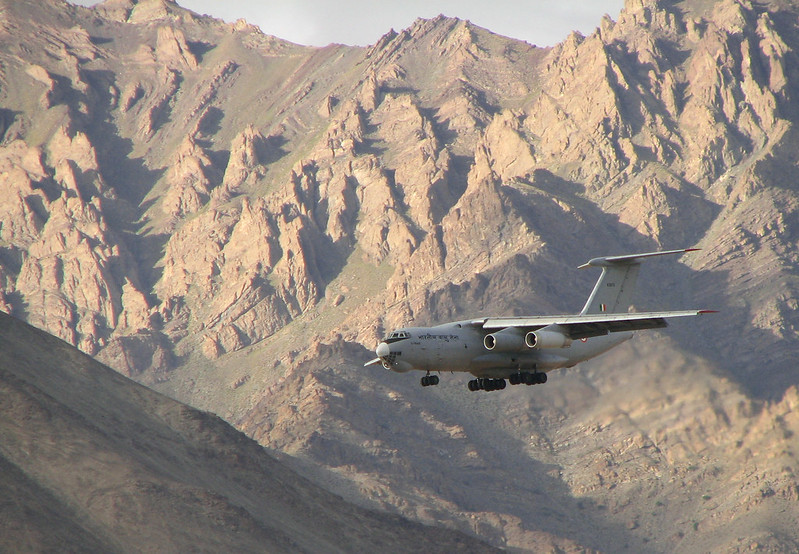
The Ilyushin Il-76 military-grade transport aircraft (pictured above) has frequently been called the ‘Lifeline of Leh’ for a good reason. Nestled in the arid depths of the Indus River valley, cradled between peaks that soar to 18,000 feet, Leh Airport is one of the highest commercial airports in the world at 10,600 feet. The long approach into Leh from Delhi crosses the near entirety of the Himalaya Ranges, then subsequently drops down sharply into the valley. On the final approach the specially-configured Airbus A320 or Il-76 conducts a series of steep banks, to follow the course of the river and passes extremely close to outlying ridges. Due to high winds, that rise later in the day, only morning flights are permitted. The thin air at this altitude means less lift, particularly treacherous at slow speed, so high-speed landings and take-offs on Leh’s 9,000-foot runway are common.
3 – Tegucigalpa, Honduras

The picturesque Honduran city of Tegucigalpa’s mountainous terrain dictates a swerving approach to its airport, Toncontín International. Although the runway was extended, after a TACA Airlines Airbus A320 pilot landed his aircraft 1,300 feet beyond the runway threshold in 2008, causing it to fall off a 65-foot embankment at the far end, the runway’s length is still highly uncomfortable at 7,100 feet. Strong wind squalls off the mountains are another complication, requiring quick yaw, pitch and roll adjustments; which means a very turbulent final approach.
2 – Lukla, Nepal

Tenzing-Hillary International Airport has already been covered by Sam. In short, Lukla township is the main gateway for trekkers headed for Everest Base Camp; but with a length of just over 1,640 feet and a gradient of 12 degrees, Lukla is an airport that only the most hardened of mountain pilots can land at. The weather is formidable, winds unpredictable and fierce; once committed to the landing there is no option of a go-around – a hard stone wall awaits at the base of the take-off runway 24. It’s also busy, with over 50 flights a day during the peak climbing season. Crashes have occurred frequently, amongst the mainly Twin Otters and Let 410 STOL aircraft that land here.
1 – Paro, Bhutan

There’s a reason Bhutanese pilots say a prayer before they land at Paro Airport. Being Bhutan’s only international airport, Paro Airport, sits in a winding river valley shadowed by mountains, that tower a further 9,800 feet above the 7,300 foot-high runway. The approach requires serious training and steep manoeuvres through the tight valley. The A319 aircraft that operate here skim close to forested ridges. Flights are restricted to visual approaches only, yet the specially-trained captain is unable to see the runway until just 500 feet above it. In the final few seconds before touchdown, at a height of just 100 feet, the aircraft must bank hard left, followed by aggressive braking and full reverse thrust to stop in time.
Which airport do you think is the most treacherous? Let us know in the comments!




